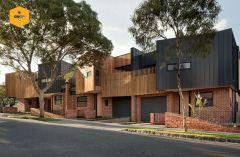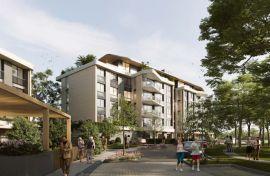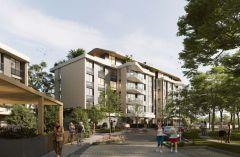A $45-million deal inked this week will help deliver infrastructure and more than 600 social, affordable and market-rate houses in central Adelaide, despite figures indicating South Australia's housing affordability had improved.
National Housing Finance and Investment Corporation chief executive Nathan Dal Bon said the five-year deal would allow the South Australian government to access up to $45 million in grants to tackle housing affordability issues through the National Housing Infrastructure Facility (NHIF).
“This agreement with the South Australian Housing Authority will fast track the delivery of crucial infrastructure across parts of metropolitan Adelaide to develop more than 600 social, affordable and market-rate homes in these areas,” he said.
SA Housing Authority chief executive Michael Buchan said this was an innovative approach to help deliver the government’s Our Housing Future 2020-2030 objectives.
“Developing market homes for sale gives the authority the opportunity to reinvest money from these sales nto social housing,” he said.
“We will release more information about these projects later in the year.”
This deal builds on the $125 million of finance that the NHIF had already provided to SA community housing providers to promote the supply of more affordable housing.
The $1-billion NHIF is an Australian government program that offers finance to eligible projects to help deliver infrastructure associated with new housing so as to unlock new affordable housing supply.
According to the latest Real Estate Institute of Australia’s Housing Affordability Report, housing affordability has improved in South Australia and New South Wales, but has remained steady or declined in other states and territories.
REIA president Adrian Kelly said homeowners now paid more than a third of their incomes towards loan repayments, while renters were on average spending a quarter of their income on rent.
“The decline is consistent with the March quarter CPI which showed that the capital city weighted average rents remained unchanged for the March quarter after an increase of 0.1 per cent in December, 2020,” he said.
Kelly said the number of first home buyers had decreased to 44,007, a drop of 4.4 per cent during the quarter, but a 62.6 per cent increase during the past 12 months. First home buyers now made up 40.3 per cent of owner-occupier dwelling commitments as loan values increase.
“During the March quarter, the average loan size grew to $506,340, an increase of 1 per cent during the quarter and a rise of 2.6 per cent during the past 12 months,” he said.
“During the quarter, the average loan size increased in all states and territories except NSW and South Australia.”










